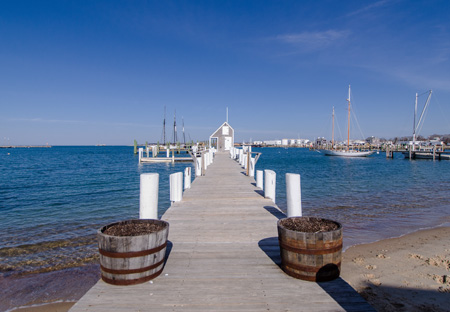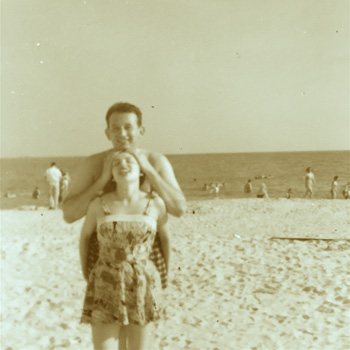Being Jewish
Ritual
When Your Parents Opt for Cremation

When our parents died just weeks apart, my sister and I were tasked with finding a final resting place for their ashes. I’d never considered my folks to be trendy, but their decision to be cremated put them squarely in that controversial category of Jews who are leaving behind the prohibition against cremation. One third of American Jews, by some counts.
For many who pursue this path, the decision reflects a concern over the environmental and/or monetary costs of burial; a desire to donate organs to science, after which bodies are typically cremated; or a growing secularization. Perhaps just as important is that mantra of real estate agents: location, location, location.
After emigrating from Russia at the turn of the 20th century, my family lived in a tightly knit clan in Mobile, Ala. Three generations of Gurwitches are buried in the Ahavas Chesed Synagogue cemetery, where my grandfather twice served as congregation president. Now our family is scattered far and wide and being buried in a location no longer regularly visited makes little sense.
I lead a secular life, so for perspective on the Jewish view of cremation, I reached out to my friend Mel Gottlieb. A rabbi and president of the Academy for Jewish Religion in California, Gottlieb was raised in an Orthodox community on the Lower East Side in New York City and has witnessed this change in norms.
“The burial ritual in the Jewish tradition bestows a feeling of numinosity in the final departure of the soul from the body,” he said, using a term that means presence of the divine. “Thus I am not an advocate of cremation. But most important is sitting shiva. It not only binds you to your ancestors”—offering the comfort of community and the power of religion—it also “ensures that you are honoring the grieving process.”
At the same time, I sought out Zach Lodmer, an avatar of contemporary, progressive American Judaism who is the former director of the Jewish Federation of Los Angeles’s millennial engagement program Nu Roots. Lodmer, too, spoke to the redemptive qualities of shiva, and, being Malibu born, practicing yoga on the beach. Still, he said he doubted that he would one day choose cremation. In fact, it’s such a charged topic that few in liberal Jewish leadership positions have weighed in publicly on the subject.

Despite these adverse perspectives, we wanted to fulfill our parents’ wishes. They were cremated at one of the numerous Jewish mortuaries that, while not publicly advertising this service, do perform cremations. The funeral director asked if we wanted to include anything in the “process,” and we decided to add the kippah our dad wore at one of his grandson’s bar mitzvahs. Per their wishes, the plan had been to scatter their ashes off the coast of Miami, where they’d lived for 40 years. My father, Harry, having grown up fishing in the Gulf of Mexico, was never happier than when near the warm Atlantic water. My mother, Shirley, who loved to travel, had confided that she hoped a burial at sea would mean she’d be touching many shores.
But when our mother died suddenly, a few hours before the start of a memorial service for our father—they were both 80 at the time of their deaths—my sister and I were overwhelmed with grief and the task of closing their estates. We sat a dual shiva, albeit an abbreviated one, and then shipped a box containing their cremains to my sister’s place in New York City, where they sat in her hall closet while we wrestled over plans that would be acceptable to both of us.
Friends suggested I follow the lead of Melissa Rivers, the daughter of legendary comedian Joan Rivers. Rivers has proudly attested to leaving smidges of her mother in Harry’s Bar and Grill in London and at her favorite television studios. Several acquaintances of mine confessed to leaving traces of their beloved mothers at iconic Manhattan sites. One deposited some of her mother’s ashes in a changing room at the midtown Manhattan Lord and Taylor, which has, at least to my knowledge, zero official correlation to the flagship store’s recent closing.
Almost two years passed before I got the idea to cast their ashes into the water surrounding Martha’s Vineyard. My parents had honeymooned there in 1957, and I make an annual summer trek to the island to visit close friends, so I’d be able to visit the spot every year.
It was 5:30 a.m. and barely light outside when I hopped onto my bike with the two Ziploc sandwich bags my sister had sent, each containing several tablespoons of a dull grayish, sandy substance. Near one of the island’s coastal golf courses, I spotted a dock in an isolated inlet: a single wooden plank, stretching maybe 50 feet into the bay. It seemed like an ideal place for a burial, if not at sea, then at cove.
I’ve read that our brains like to see patterns even in randomness; still, it was tempting to think that the presence of a sailboat named Growl Tiger was more than coincidence since, in her later years, my mother developed a fondness for animal prints. “Pick me up something fun in a giraffe or tiger print,” she’d say when I became her personal shopper. All the ladies at the Miami Jewish Home for the Aged, where my parents spent their last years, favored these prints. You’d see a group of them strolling together and, from a distance, it looked like a coalition of cheetahs crossing the grounds. For his part, my father was an avid golfer and would have appreciated a final resting spot this close to an 18th hole.
A lone gull hung in the sky as witness to my parents’ cremains slowly spilling out, ashes clouding the surface that were soon indistinguishable from the other particles suspended in the murky green water. Somehow, my lingering grief was lessened.
We have yet to decide what to do with the remaining remains. I can’t say it “sparks joy” to hold the box close, but there is something comforting in visiting with them in my sister’s hall closet. I ritually greet them with, “Hi, Mom and Dad,” before hanging up my coat. Still, if you should spot my sister and me, arm in arm, near a body of water, reciting the Shema and clutching two plastic baggies, best not to stand downwind.
Annabelle Gurwitch is a New York Times best-selling author, most recently of the memoir Wherever You Go, There They Are: Stories About My Family You Might Relate To, in which she writes about her family’s early years as Jewish immigrants in the Deep South.










 Facebook
Facebook Instagram
Instagram Twitter
Twitter
Cathy says
I suggest that if anyone wants to know more about what Jewish tradition teaches regarding the soul after death, go to http://www.jewish-funeral-guide.com/tradition/body-after-death.htm . This page is just part of an online book which is very helpful. It is important to know that the rabbis have derived the belief that the body hovers over the soul for the first year after death. Verses from Tanach give hints, based on which it seems that scattering ashes during the first year after death can be upsetting to the soul.